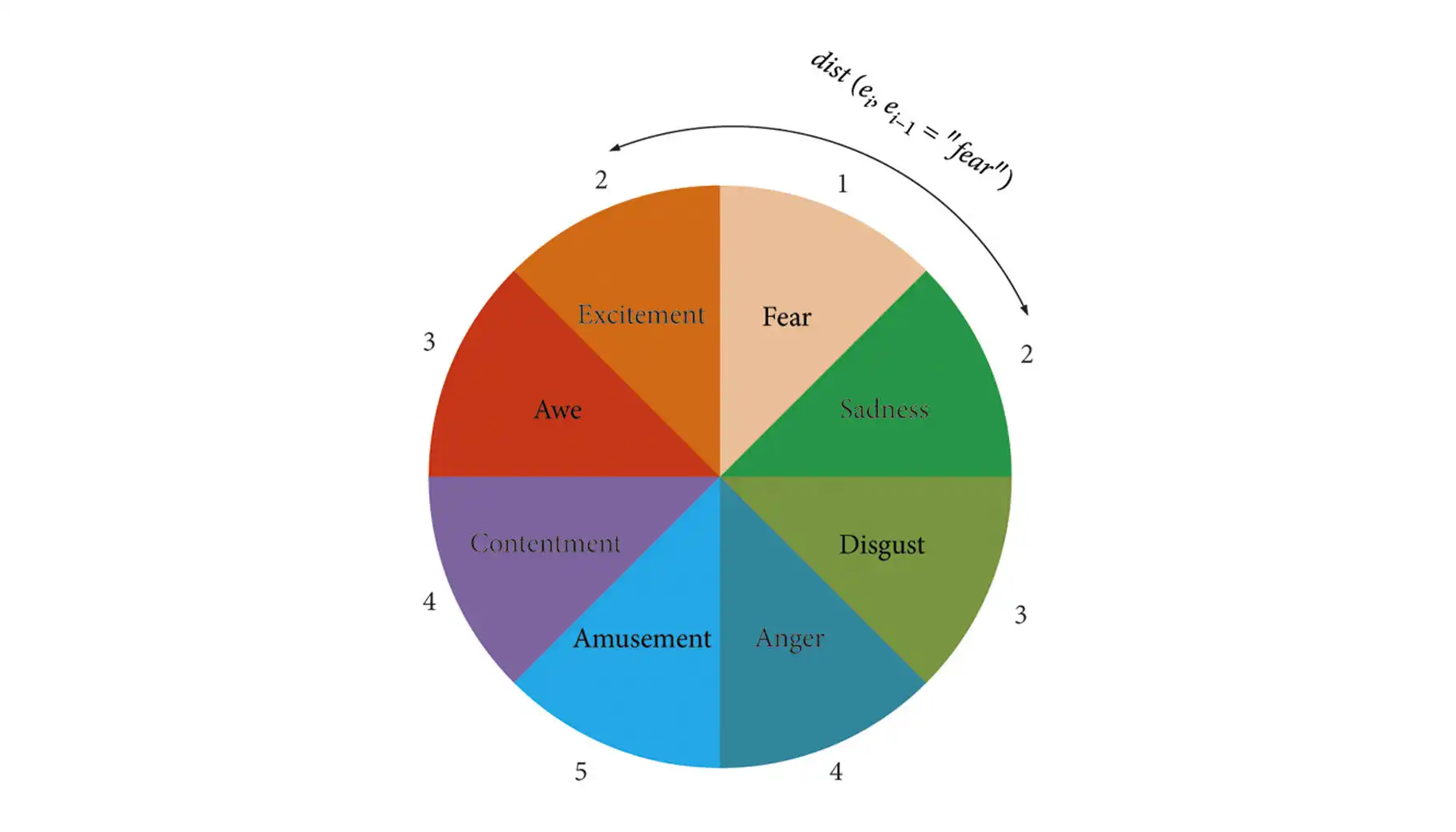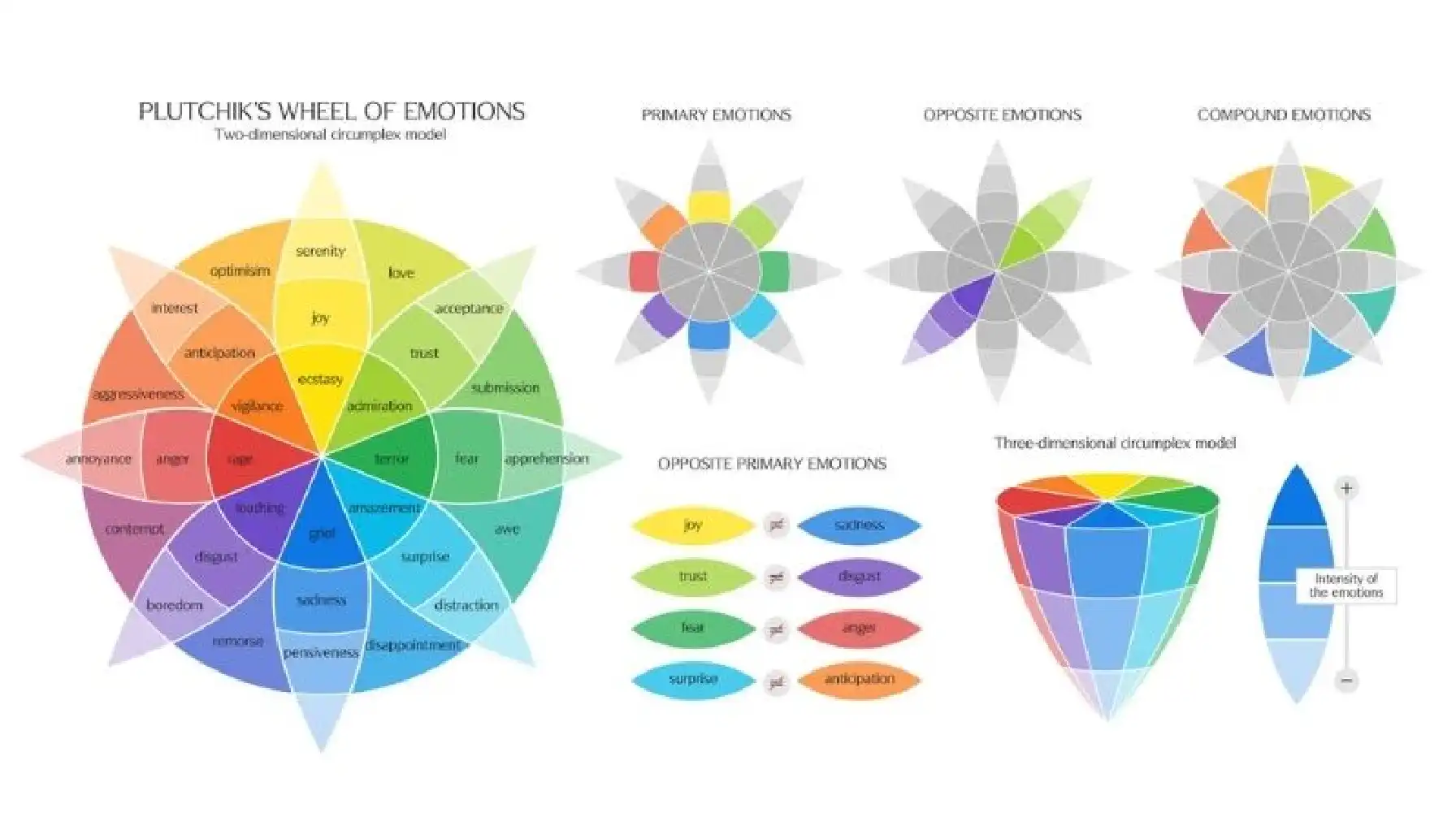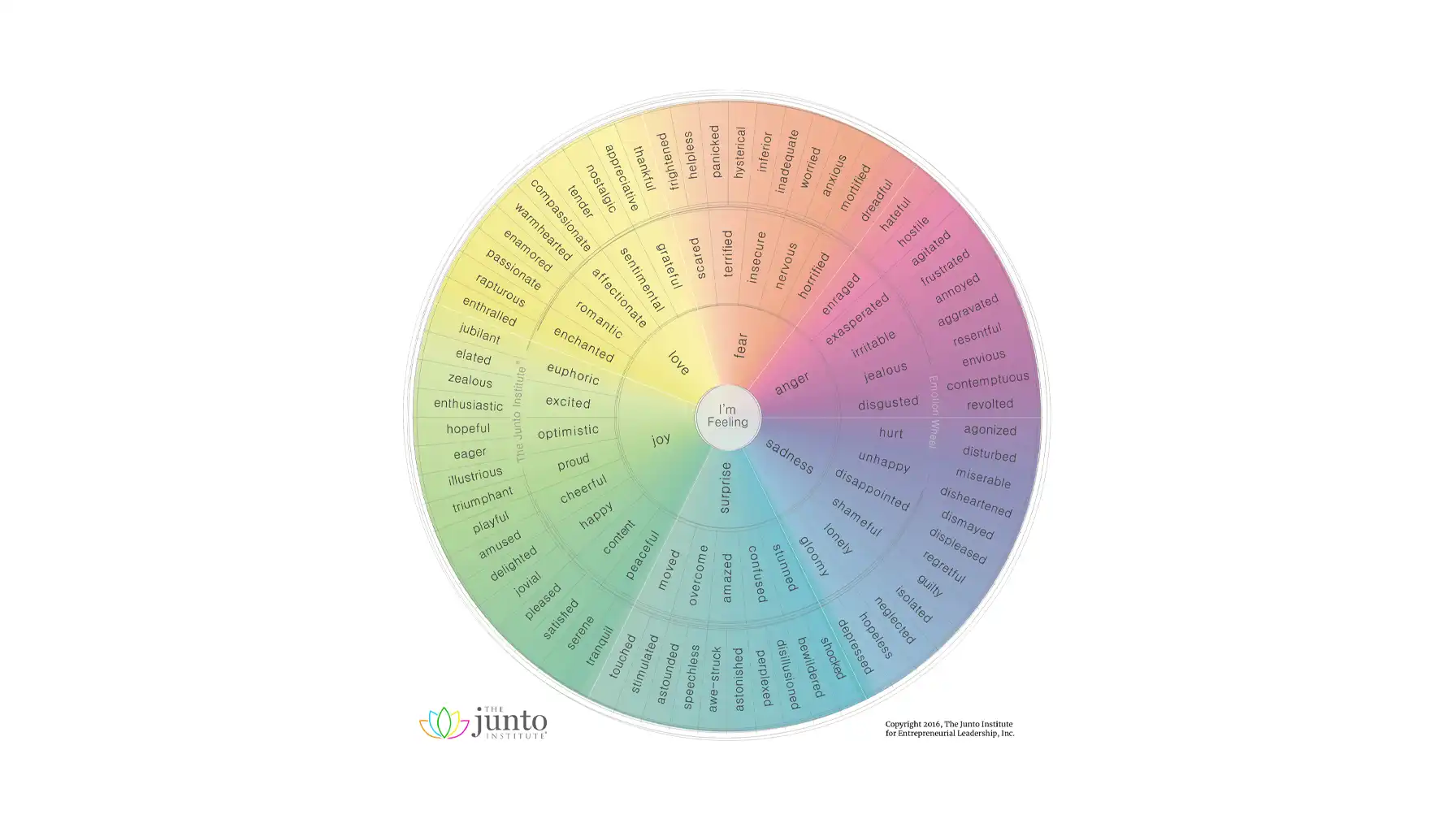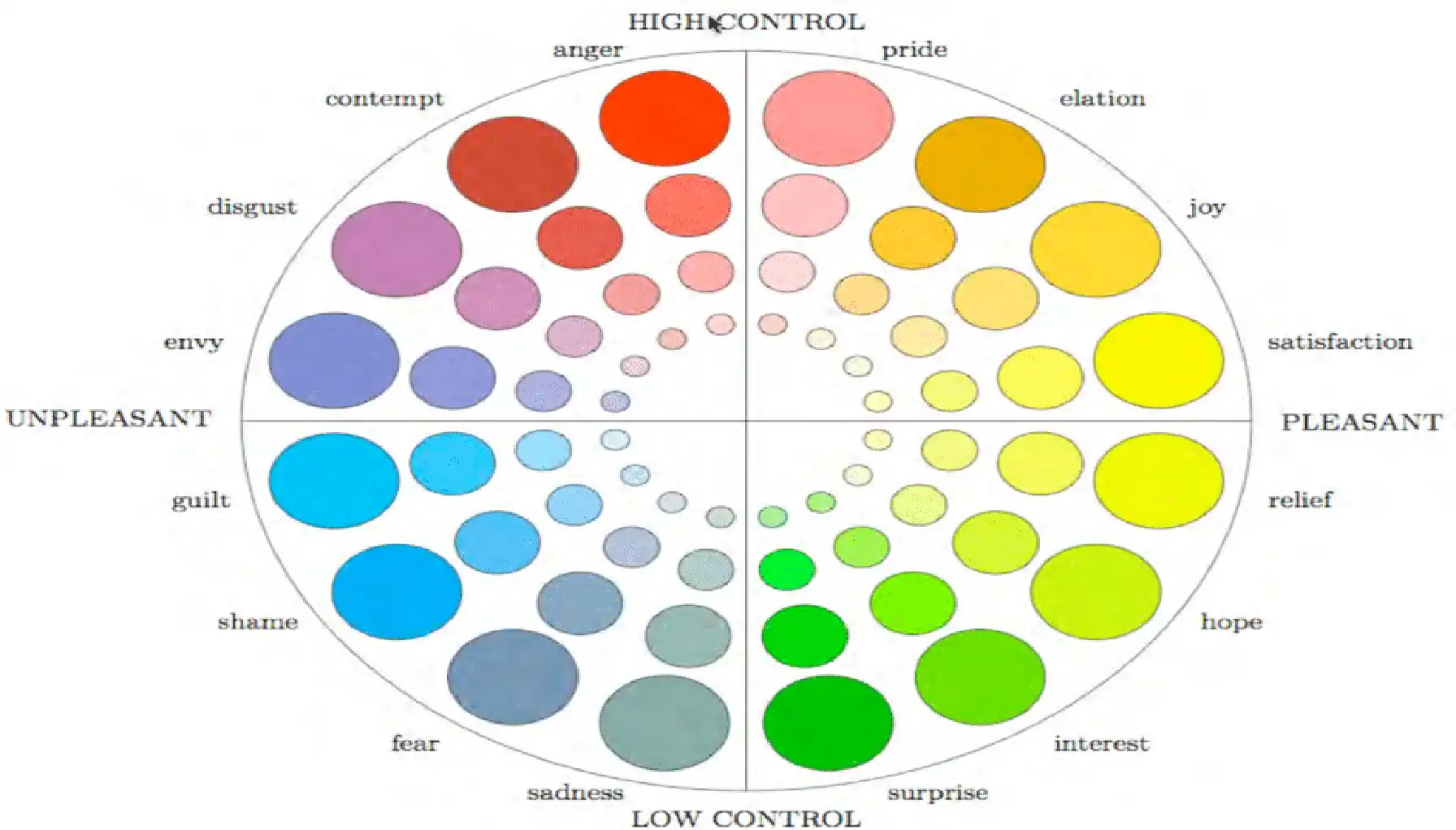Spin the Emotion Wheel: A Therapist’s Guide

Contents:
“Your intellect may be confused, but your emotions will never lie.”
An age-old causality dilemma: Do our thoughts shape our emotions, or is it emotions that affect our thoughts? It is the question that therapists and philosophers have pondered over the centuries. Emotions as they are emerged during the preverbal era and became a distinct form of cognition that reflects the reality of the recipient.
Nevertheless, their nature is as diverse as humans are, and understanding them properly can be a challenge even for a professional. This is when the wheel of emotions comes into play. Its concept is rather young, though its framework had been developed long ago, when scholars were first attempting to map the inner workings of the human psyche.
So, what does a core emotion wheel chart show? Which types to prefer, and how brain training may enhance one’s ability to understand what they feel? Let us check.

What Is the Basic Emotion Wheel? Types and Definitions
Let us start with the definition of the EW. The Emotion Wheel is a structured visual tool that is used to help people identify, acknowledge, articulate, and understand their emotional experiences more accurately. As per Vera Sacharin et al., emotions are multifaceted processes that encompass subjective feelings, appraisals, physiological responses, expressions, and regulatory strategies, all aimed at preparing us for further action.
The Emotion Sensation Wheels, on their part, serve to map these processes in a way that feels tangible and accessible. Instead of listing emotions randomly, scholars strive to create a system around core emotional families that may differ in intensity, similarity, and other less obvious attributes. Some models also use psychological dimensions like valence (positive to negative) and control (low to high) to further define the emotional experience in proper terms.
There exist numerous approaches to defining what an emotion is and how to identify it properly. As a result, various types of EWs have emerged, each influenced by different psychological theories and practical goals.
Name | Core Structure | Key Features |
Plutchik’s Emotion Wheel (PEW) | 8 basic emotions in opposing pairs (e.g., joy vs. sadness), arranged like petals in a flower. | Shows emotion intensity and blends (e.g., fear + surprise = awe). |
Geneva Emotion Wheel (GEW) | Emotions arranged in a circle by valence (pleasant ↔ unpleasant) and control (low ↔ high). | Allows users to rate intensity; based on appraisal theory*. |
Mikels’ Emotion Wheel (MEW) | Features a distinct set of emotion terms, often fewer than Plutchik’s; adapted for experimental psychology. | Used in studies involving digital emotion processing and machine learning. |
Junto Emotion Wheel | A simplified, modern adaptation of Plutchik’s model, often redesigned with softer language. | Accessible, visually engaging; sometimes used in coaching and education. |
*Appraisal theory suggests that our emotions originate from how we evaluate or interpret events. In other words, it is not the event that triggers an emotion, but the way we think about this event from the perspective of our own experience only.
Why Naming Emotions Is So Important
As a rule, we generally struggle to pronounce how we feel. Are we fine, pleasant, or happy? These vague labels usually hide deeper stories, for emotions are composed of numerous constructs that cannot be really explained in one single word. Indeed, at this point, there is no need to delve into semantics; instead, it is a matter of psychology, and understanding the inner state is a powerful skill that can be mastered (through mindfulness meditations, for example).
Accurately naming emotions is the most basic tool to build emotional intelligence. As soon as the feeling is identified and pronounced, one regains control over the internal experience and may regulate it appropriately. This process is known as affect labeling, which has been proven as a decent instrument to calm the nervous system and reduce emotional intensity.
An emotionally literate person is a stable person who knows how to reduce stress, get through the conflicts, and express their needs with dignity and grace. This was the primary reason why the Emotion Color Wheel was developed – to help people cope with their inner demons, comprehend complex feelings, and grow into better versions of themselves.

How to Use the Emotion Behavior Wheel: Step-by-Step Guide
Since there are quite a few EWs that differ in structure and approach to emotional categorization, the way you use them may vary, too. Anyway, the goal remains the same: to help you identify what you are truly feeling. Here is what one should do in order to get the best out of this experience (on the example of the Junto EW).
Pause for a moment.
First of all, it is vital to notice what is going on deep inside on the emotional level. Some manifestations, though, can be physical: tight shoulders, trembling hands, or sweaty palms. Ask yourself: "What do I feel right now? What is going on with me?"
Start with a core emotion.
Any feeling has a basis. Most wheels place primary emotions, e.g., love, joy, fear, or anger, at the center. Choose the one that feels appropriate for you (or, at least, may be somehow associated with your mental state at the moment).
Move outward to be more specific.
Follow the segments that are adjacent to the core emotion you selected before. This is how one comes across more refined, peculiar, intensified terms that help you arrive at the emotional nuance that genuinely reflects your inner state. Here is an example path:
surprise -> confused -> perplexed OR love -> sentimental -> nostalgic

Explore the context.
Emotions rarely emerge on their own. As a rule, there should be a trigger (a person, event, expectation, etc.) that gives rise to an emotional response in motion. It is important to understand when, where, and why the feeling may occupy your mind and which pattern is the most prevalent.
Express yourself!
Now that you have identified the emotion, it is time to externalize it by writing it down, talking about it with someone you trust, or doing something creative (e.g., writing a song, painting, or dancing) in the end.
The next steps might be different. For some people, it might be necessary to consult specialists, e.g., psychiatrists or neurologists, who know how to tackle mental conditions from a biological perspective. It is a responsible step, so do not neglect it, should you feel the need.
Developing Emotional Intelligence Is Vital. Here is How

In order to understand yourself and use the psychology Emotion Wheels efficiently, it is vital to nourish your emotional intelligence (EQ), i.e., the ability to recognize, understand, and manage emotions in yourself. Indeed, it is an inseparable part of the journey, no matter how hard you try to stay on track with your goals, relationships, or inner balance.
EQ is not fixed, and this is the good news, for sure; in fact, it is a skill that can be mastered, thanks to the brain's natural ability to evolve and rewire itself – neuroplasticity.
What Does Emotional Intelligence Involve?
Emotional intelligence typically consists of several interrelated abilities:
Self-awareness, i.e., identifying what you feel and why
Self-regulation, i.e., managing your emotional reactions
Motivation, i.e., channeling emotions toward goals
Empathy, i.e., understanding how others feel
Social skills, i.e., communicating with emotional sensitivity
Start with the Language
To improve EQ, the first step is often learning the emotive language (a purely psycholinguistic concept that is currently being studied all over the world). Pay attention to the vocabulary you utilized and involved at certain periods, and compare it to the feelings you were experiencing at the same time. The more clearly you can name your feelings and catch their presence on time, the better equipped you are to work with them.
Brain, just like muscles, may grow with training (not physically, though, but through the strengthening of neural pathways. Explore the potential of brain-training tools, for they may turn any (potentially) wasted moment into a fruitful opportunity to boost your mind powers for good. But how?
Related article: Left and Right Brain: Fact vs. Fiction
Mind Elevate: Your Cognitive Trainer That Inspires and Protects
Mind Elevate is one of the youngest but still promising brain-training tools on the market that strives to support the cognitive foundations of emotional intelligence and beyond. To be more precise, the app offers 35+ mini games that target the following areas:
Memory retention
Attention and concentration
Logical reasoning
Math fluency
Musical perception
…and even more!
Use the Emotion Wheel to name what you feel. Use Mind Elevate to build the brainpower to stay aware of it.





